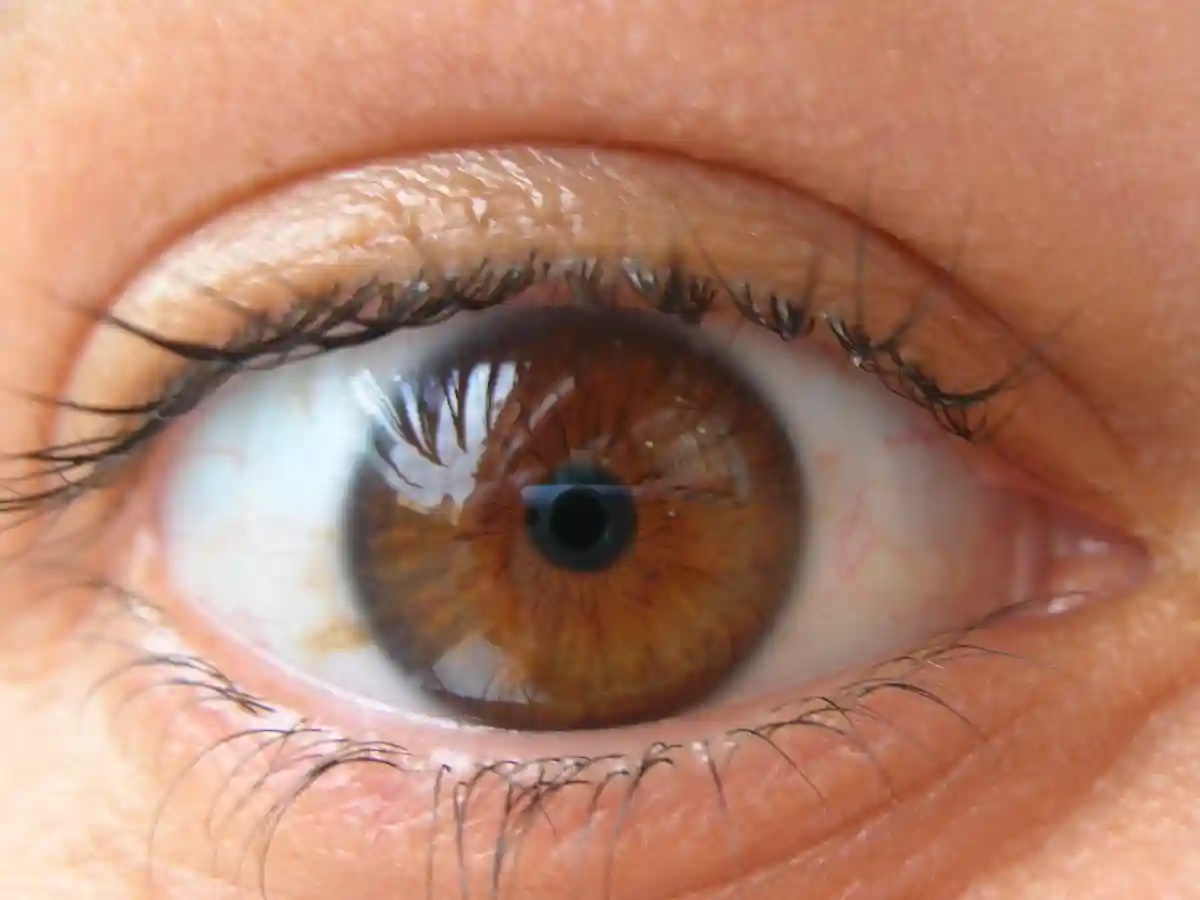-
Welcome to Celiac.com!
You have found your celiac tribe! Join us and ask questions in our forum, share your story, and connect with others.
-
Celiac.com Sponsor (A1):
Celiac.com Sponsor (A1-M):
-
Get Celiac.com Updates:Support Our Content
Search the Community
Showing results for 'nystagmus'.
-
Celiac.com 09/12/2024 - Celiac disease is an autoimmune disorder where the ingestion of gluten leads to damage in the small intestine. This condition affects roughly one in 133 people worldwide, though it often goes undiagnosed due to its diverse symptoms. Celiac disease can co-occur with other autoimmune diseases, complicating its presentation and management. The disease’s prevalence and diagnosis are influenced by demographic and genetic factors, making it a significant health concern globally. Ophthalmic Manifestations of Celiac Disease Celiac disease is not just a gastrointestinal disorder; it can also have various ophthalmic manifestations. Patients with celiac disease may exhibit a range of eye-related issues that are not typically associated with the condition, such as decreased endothelial cell density, vitamin A deficiency causing dryness, altered corneal nerve density, cataracts, uveitis, changes in choroidal thickness, papilledema, and neurological issues like nystagmus. These manifestations highlight the systemic nature of celiac disease and the importance of comprehensive care. The Need for Thorough Evaluation Before Corneal Refractive Surgery Corneal refractive surgery, which includes procedures like LASIK, is increasingly popular for correcting vision problems. However, for patients with celiac disease, it is crucial to conduct a thorough evaluation before proceeding with such surgeries. The variability in ocular manifestations among celiac patients necessitates individualized assessments to determine surgical candidacy and optimize outcomes. This evaluation should include both subjective and objective assessments. Subjective Assessments A detailed medical history focusing on the patient’s experience with celiac disease is essential. This includes questions about dietary gluten intake, weight loss, joint pain, and cognitive impairments like brain fog. Understanding these aspects can help in identifying potential complications that might affect surgical outcomes. Objective Assessments A comprehensive objective assessment should include several diagnostic tests: Slit-lamp biomicroscopy to examine the eye’s structures. Schirmer test and tear break-up time (TBUT) to assess tear production and dry eye. Optical coherence tomography (OCT) to measure retinal and choroidal thickness. Scheimpflug imaging and fundoscopy to evaluate the anterior and posterior segments of the eye. Specific Considerations for Celiac Disease Patients Given the diverse ocular manifestations associated with celiac disease, several specific considerations should be addressed: Dry Eye Disease: Patients with celiac disease are more prone to dry eye disease. Symptoms like ocular discomfort, irritation, redness, and burning can be managed with artificial tears and punctal plugs before surgery. Endothelial Cell Density (ECD): Celiac disease patients may have lower ECD, which can lead to corneal edema post-surgery. Specular microscopy is recommended to evaluate ECD before proceeding with surgery. Anterior Chamber Depth (ACD): Some celiac disease patients might have shallower ACDs, which can indicate early-onset cataracts. Scheimpflug imaging can help assess ACD. Choroidal and Retinal Health: OCT is crucial to evaluate choroidal thickness and retinal health. Thinner choroids and other posterior segment abnormalities can affect visual outcomes post-surgery. Thyroid-Associated Orbitopathy (TAO): Celiac disease patients may also suffer from TAO, which can impact corneal health and refractive surgery outcomes. Thyroid function tests and orbital ultrasound are necessary for a thorough evaluation. Vitamin A Deficiency: This can lead to dryness and other ocular surface issues. Serum retinol levels should be checked, and vitamin A supplementation should be managed appropriately. Neurological Issues: Conditions like gluten ataxia and nystagmus can complicate surgery due to motor control issues. These conditions need careful assessment and management. Autoimmune Co-morbidities: The presence of other autoimmune conditions, like Type 1 Diabetes Mellitus, can increase the risk of complications like diabetic retinopathy, impacting surgical outcomes. Comprehensive retinal evaluations are necessary in these cases. Conclusion: The Importance of Comprehensive Care This study underscores the need for a thorough and individualized evaluation of celiac disease patients considering corneal refractive surgery. By addressing the various ophthalmic manifestations and related autoimmune conditions, healthcare providers can improve surgical outcomes and patient satisfaction. The recommendations provided in this study serve as preliminary guidelines, highlighting the importance of further research to better understand the impact of celiac disease on corneal refractive surgery outcomes. For celiac patients, these insights are crucial, as they emphasize the need for comprehensive care and tailored management strategies to ensure the best possible surgical results. Read more at: cureus.com
- 1 comment
-
- celiac disease
- corneal erosion
- (and 7 more)
-
Welcome, Melissa, It's really important with Celiac Disease to make sure your body is getting plenty of essential vitamins and minerals. I understand what you are going through. I developed severe nutritional deficiencies, too. The vitamin that runs out first is Vitamin B 1 Thiamine. Thiamine deficiency can cause problems with the gallbladder. I had mine removed, too, and my Thiamine deficiency got worse, too. Thiamine deficiency in the digestive tract is called Gastrointestinal Beriberi. Thiamine deficiency and magnesium deficiency can cause constipation. Thiamine deficiency can cause Ophthalmoplegia, the paralysis or weakness of the eye muscles (crossed eyes) and nystagmus. Thiamine deficiency causes neuropathy making us feel "pins and needles" or "cold and prickly nerves". Neuropathy is also connected to Cobalamine B12 deficiency and Pyridoxine B 6 deficiency. Thiamine deficiency causes headaches, tension headaches, cluster headaches, migraine headaches. Thiamine deficiency can cause localized swelling and water retention, and edema of the feet and hands. Thiamine deficiency and Vitamin C deficiency can cause poor healing of wounds. Thiamine deficiency causes seizures. Seizures are not fun. Thiamine deficiency causes neurological problems, problems with thinking and comprehension, and memory problems. Yes, I've had Thiamine deficiency. I've lived through these same symptoms. My doctors did not recognize the symptoms of Thiamine deficiency. I studied Microbiology and Nutrition at university. I learned how cells work and the vitamins needed to make them work. Thiamine. Out of desperation, I tried high dose Thiamine. I had symptom improvement within an hour of taking high dose Thiamine. I took a B Complex supplement, too, because Thiamine needs the other B vitamins and magnesium to make life supporting enzymes. High doses of Thiamine are needed to get inside cells to make them function properly again. I used Thiamine Hydrochloride (500 - 2000 mg/day), and Allithiamine (Tetrahydrofurfuryl Disulfide - TTFD), and Benfotiamine. Doctors think Thiamine deficiency only happens in alcoholism and presents only with Wernicke's-Korsakoff syndrome, but outside of alcoholism, Thiamine deficiency presents with all these seemingly unrelated illnesses. Ask your doctor to check for nutritional deficiencies, although blood tests are not accurate measurement of thiamine inside cells. Ask for an Erythrocyte Transketolase test which tests for evidence thiamine is actively being used properly. Ask for intravenous thiamine if available. Keep us posted on your progress!
-

Gluten Ataxia?
knitty kitty replied to Krystal K.'s topic in Post Diagnosis, Recovery & Treatment of Celiac Disease
@jeriM, Getting an endoscopy now would give your doctor a baseline with which to compare future endoscopies to track healing. However, "the first do no harm" part seems to get lost with Celiac Disease because doctors don't realize how debilitated we can get when exposed to gluten. Some doctors will make a diagnosis of Celiac based on high blood tests, or a positive DNA test for the most common Celiac genes and positive response to a gluten free diet. That vision vibration you are having sounds like the nystagmus I have experienced. Mine was due to Thiamine deficiency. Your doctor may be able to evoke nystagmus occurring by having you look out of the corners of your eyes (all the way to the left or right) and turning your head sharply rapidly in the opposite direction. This scientific study might be of interest to you and your doctor. Vestibular signs of thiamine deficiency during the early phase of suspected Wernicke encephalopathy https://www.ncbi.nlm.nih.gov/pmc/articles/PMC6082353/ Celiac Disease damages the small intestine preventing absorption of essential vitamins and minerals resulting in malnutrition. Thiamine is one of the eight essential B vitamins. Thiamine deficiency symptoms include gastrointestinal upsets, diarrhea, cramping and bloating (gastrointestinal beriberi), sudden weight loss, peripheral neuropathy, muscle tremors, nystagmus and more. The erythrocyte transketolase test can check for thiamine deficiency. Testing for and correcting nutritional deficiencies is part of proper follow up care for Celiac Disease. Supplementing with B Complex, magnesium, and Vitamin D is beneficial during the early healing months. I followed the high dose Thiamine supplementation (500-1500 mg/day) in order to correct my Thiamine deficiency. I also supplemented all eight B vitamins and magnesium. I also follow the Autoimmune Protocol Diet (AIP) which has been scientifically proven to reduce inflammation and promote healing. It's basically meat, veggies and some fruits. Nothing packaged, nothing processed. No legumes, no nightshades, no grains, no dairy. It has helped me immensely. I hope this helps! Please keep us posted on your progress. -
It is called nystagmus. It is mentioned in this excellent talk "What does gluten do to your brain?" at 5:30 from the start. In the study, 11% of newly diagnosed gastro-intestinal coeliac patients had nystagmus. What does gluten do to your brain? Youtube
-
Knitty Kitty, I came across these links again recently. I am just posting them here again in case we missed them somehow... Very contrasting levels of learning.....one from an expert and one from an "Amateur Expert" lay person....who also has found these connections between Low Thiamine levels and systemic disease... From Lonsdale entitled "Thiamine and magnesium deficiencies: keys to disease" https://pubmed.ncbi.nlm.nih.gov/25542071/ From Just a “Common Person” who found out that low Magnesium and Thiamine levels where causing her Son’s Nystagmus…..aka "Dancing Eyes" on of the classic clinical symptom's of a Thiamine deficiency. http://www.ctds.info/nystagmus.html#:~:text=Though it does not seem to be well,deficiencies of each have been linked to nystagmus. I hope this is helpful but it is not medical advice. Posterboy,
-
Psychiatric and Neurological Manifestations of Celiac Disease in Adults
Russ H commented on Jefferson Adams's article in Spring 2023 Issue
Thank you for the interesting review article. Sheffield Teaching Hospital in the UK has been doing excellent research into gluten induced neuropathy. For example, in the prospective cohort study linked below, 67% of newly diagnosed celiac disease patients (mean age 43) had symptoms and/or signs of neurologic dysfunction. 42% suffered frequent headaches, 29% had gait instability and 11% had nystagmus. Interestingly they say: Which adds weight to the cause being directly immunological e.g. antibodies to tTG6. https://www.cghjournal.org/article/S1542-3565(19)30278-2/fulltext -
Celiac.com 02/27/2019 - Celiac disease is an autoimmune condition with numerous symptoms, and associated conditions. People with celiac disease often have gastrointestinal symptoms, including upset stomach, abdominal pain, gas, bloating, indigestion, and diarrhea. Some suffer from many of these on a regular basis. However, many people show few or no symptoms. No single set of signs or symptoms is typical for everyone with celiac disease. Signs and symptoms can vary greatly from person to person. Symptoms of Celiac Disease Fall Into 7 Major Categories Digestive symptoms such as abdominal pain, bloating, gas, diarrhea, constipation, nausea, vomiting, and steatorrhea (fatty stools); Non-digestive symptoms such as fatigue, weakness, anemia, weight loss, malnutrition, delayed growth, irritability, depression, anxiety, and cognitive impairment; Dermatological symptoms such as skin rash, itching, blistering, and dermatitis herpetiformis; Musculoskeletal symptoms such as joint pain, muscle pain, muscle cramps, and osteoporosis; Neurological symptoms such as headache, migraine, ataxia, neuropathy, seizures, and cognitive impairment; Reproductive symptoms such as infertility, menstrual irregularities, and recurrent miscarriage. No obvious symptoms or asymptomatic; Symptoms Can Vary Between Children and Adults The signs and symptoms of celiac disease can vary greatly and are different in children and adults. The most common signs for adults are diarrhea, fatigue and weight loss. Adults may also experience bloating and gas, abdominal pain, nausea, constipation, and vomiting. Many symptoms caused by celiac disease are the result of nutritional deficiencies caused by flattened villi and subsequent malabsorption. Symptoms in Children Children under 2 years old celiac symptoms often include vomiting, chronic diarrhea, failure to thrive, muscle wasting, poor appetite, and swollen belly. Older children may experience diarrhea, constipation, weight loss, irritability, short stature, delayed puberty, and neurological symptoms, including attention-deficit/hyperactivity disorder (ADHD), learning disabilities, headaches, lack of muscle coordination and seizures Vague Symptoms Can Delay Celiac Diagnosis It is not uncommon for symptoms of celiac disease to be vague or confusing. Vague or confusing symptoms can include dental enamel defects, bone disorders like osteoporosis, depression, irritability, joint pain, mouth sores, muscle cramps, skin rash, stomach discomfort, and even neuropathy, often experienced as tingling in the legs and feet. To make matters more challenging, celiac symptoms can also mimic symptoms of other diseases, such as anemia, Crohns disease, gastric ulcers, irritable bowel, parasitic infection, even various skin disorders or nervous conditions. Vague or confusing symptoms can delay celiac disease diagnosis. Signs and Symptoms of Celiac Disease Abdominal cramps, gas and bloating Acne Anemia Ataxia (gluten ataxia) Borborygmi—stomach rumbling Coetaneous bleeding Delayed puberty Dental enamel defects Diarrhea Dry skin Easy bruising Epistaxis—nose bleeds Eczema Failure to thrive or short stature Fatigue or general weakness Flatulence Fluid retention Folic acid deficiency Foul-smelling yellow or grayish stools that are often fatty or oily Gastrointestinal symptoms Gastrointestinal hemorrhage General malaise, feeling unwell Hematuria—red urine Hypocalcaemia/hypomagnesaemia Infertility, or recurrent miscarriage Iron deficiency anemia Joint Pain Lymphocytic gastritis Malabsorption Malnutrition Muscle weakness Muscle wasting Nausea Obesity/Overweight Osteoporosis Pallor—pale, unhealthy appearance Panic Attacks Peripheral neuropathy Psychiatric disorders such as anxiety and depression Skin Problems—acne, eczema, DH, dry skin Stunted growth in children Underweight Vertigo Vitamin A deficiency Vitamin B6 deficiency Vitamin B12 deficiency Vitamin D deficiency Vitamin K deficiency Vomiting Voracious appetite Weight loss/gain Zinc deficiency Conditions Associated with Celiac Disease People with one or more of these associated conditions are at higher risk for celiac disease: Addison's Disease Anemia Anorexia Nervosa, Bulimia Arthritis Asthma Ataxia, Nerve Disease, Neuropathy, Brain Damage Attention Deficit Disorder Autism Bacterial Overgrowth Cancer, Lymphoma Candida Albicans Canker Sores—Aphthous Stomatitis) Casein / Cows Milk Intolerance Chronic Fatigue Syndrome Cognitive Impairment Crohn's Disease Depression Dermatitis Herpetiformis Diabetes Down Syndrome Dyspepsia, Acid Reflux Eczema Epilepsy Eye Problems, Cataract Fertility, Pregnancy, Miscarriage Fibromyalgia Flatulence—Gas Gall Bladder Disease Gastrointestinal Bleeding Geographic Tongue—Glossitis Growth Hormone Deficiency Hashimoto’s Thyroiditis Heart Failure Infertility, Impotency Inflammatory Bowel Disease Intestinal Permeability Irritable Bowel Syndrome Kidney Disease Liver and biliary tract disorders (transaminitis, fatty liver, primary sclerosing cholangitis, etc.) Low bone density Lupus Malnutrition, Body Mass Index Migraine Headaches Multiple Sclerosis Myasthenia Gravis Celiac Disease Obesity, Overweight Osteopenia, osteoporosis, osteomalacia Psoriasis Refractory Celiac Disease & Collagenous Sprue Sarcoidosis Scleroderma Schizophrenia / Mental Problems Sepsis Sjogrens Syndrome Sleep Disorders Thrombocytopenic Purpura Thyroid & Pancreatic Disorders Tuberculosis Nutritional Deficiencies Associated with Celiac Disease and their Related Clinical Manifestations .divTable{ display: table; width: 100%; } .divTableRow { display: table-row; } .divTableHeading { background-color: #EEE; display: table-header-group; } .divTableCell, .divTableHead { border: 1px solid #999999; display: table-cell; padding: 3px 10px; min-width: 120px; } .divTableHeading { background-color: #EEE; display: table-header-group; font-weight: bold; } .divTableFoot { background-color: #EEE; display: table-footer-group; font-weight: bold; } .divTableBody { display: table-row-group; } Nutritional deficiency Most frequent signs and symptoms Iron Hypochromic, microcytic anemia, glossitis, koilonychia, fatigue, pallor, cognitive impairment Folate Megaloblastic anemia, glossitis, diarrhea, cognitive impairment Vitamin B12 Megaloblastic anemia, posterior columns syndrome, dementia, depression, psychosis Vitamin D Osteomalacia (deformity of bone, pathologic fractures), osteoporosis, cognitive impairment, secondary hyperparathyroidism Zinc Growth retardation, hypogonadism, infertility, dysgueusia, poor wound healing, diarrhea, dermatitis on the extremities and periorificial, glossitis, alopecia, corneal clouding Less frequently occurring Protein Edema, muscular atrophy Vitamin B1 (thiamine) Irritability, fatigue, headaches, peripheral neuropathy, wet Beriberi: congestive heart failure; Wernicke: nystagmus, ophtalmoplegia, ataxia; Korsakoff: hallucinations, impaired short-term memory and confabulation Vitamin B3 (niacin) Pellagra: diarrhea, dementia, pigmented dermatitis; Glossitis, stomatitis, vaginitis, vertigo, burning dysesthesias Vitamin B6 (pyridoxine) Stomatitis, angular cheilosis, glossitis, irritability, depression, confusion, normochromic normocytic anemia Vitamin A Follicular hyperkeratosis, night blindness, conjunctival xerosis, keratomalacia Vitamin E Hemolytic anemia, peripheral neuropathies, ophtalmoplegia, posterior columns syndrome Vitamin K Easy bleeding Top Scientific References on Celiac Symptoms University of Chicago Celiac Disease Center Mayo Clinic Celiac Disease Center Vitamin and Mineral Deficiencies Common in Newly Diagnosed Celiac Disease Patients Celiac Disease: Extraintestinal Manifestations and Associated Conditions
- 144 comments
-
- celiac
- celiac disease
- (and 4 more)
-

Gluten ataxia
knitty kitty replied to Yvonne (Vonnie) Mostat, RN's topic in Related Issues & Disorders
Thiamine deficiency is frequently found in Celiac Disease and gluten free diets can be low in Thiamine. Thiamine is definitely related to changes in the cerebellum resulting in slurred speech, involuntary eye movement (nystagmus), and gait ataxia. Bright spots in brain imaging can be found in Thiamine deficiency. Thiamine is nontoxic and safe. Administration of Thiamine can improve ataxia. Ttg6 affects the mitochondria. Mitochondria utilize thiamine to produce energy. In states thiamine insufficiency, thiamine supplementation has shown to be beneficial. Articles.... An In Vitro Study on Mitochondrial Compensatory Response Induced by Gliadin Peptides in Caco-2 Cells https://www.ncbi.nlm.nih.gov/pmc/articles/PMC6514596/ "Apart from the role in providing power to cells and affecting cell metabolism (e.g., nutritional sensing, synthesis of metabolic precursors, calcium regulation, maintenance of redox regulation and decision in cell fate) [55], mitochondria are relevant in oxidative stress. In this framework, the understanding of the relationship between oxidative stressors, such as gliadin, and these organelles could improve our knowledge of the pathophysiology of gluten-related disorders." And... Therapies for mitochondrial diseases and current clinical trials https://www.ncbi.nlm.nih.gov/pmc/articles/PMC5773113/ "Thiamine (vitamin B1) also enhances pyruvate dehydrogenase activity, thereby increasing pyruvate oxidation and reduced cofactors (NADH and FADH2) generation. Thiamine has been used in mitochondrial disorders individually or in combination with other agents." And... Brain mitochondrial metabolism in experimental thiamine deficiency https://pubmed.ncbi.nlm.nih.gov/6493495/ "We conclude that the mitochondrial abnormalities resulting from thiamine deficiency are secondary to depression of thiamine-mediated enzyme activity, rather than from a putative role of thiamine in chemiosmotic coupling, and that the resulting abnormalities in ATP synthesis and perhaps in glutamate catabolism result in the irreversible neurologic defect seen in this disease." And... A case of celiac disease with hallucinations https://www.ncbi.nlm.nih.gov/pmc/articles/PMC5765830/ "Thiamine deficiency is associated with Wernicke encephalopathy, which can present following malnutrition or malabsorption, most often with symptoms like ataxia, oculomotor disturbances, and changes in mental status." And... Hiding in Plain Sight: Modern Thiamine Deficiency https://www.ncbi.nlm.nih.gov/pmc/articles/PMC8533683/ And... Susceptibility of the cerebellum to thiamine deficiency https://pubmed.ncbi.nlm.nih.gov/16527765/ And... High-dose thiamine improves the symptoms of Friedreich's ataxia https://www.ncbi.nlm.nih.gov/pmc/articles/PMC3669970/ And... Thiamine and spinocerebellar ataxia type 2 https://www.ncbi.nlm.nih.gov/pmc/articles/PMC3604288/ And... Wernicke's Encephalopathy https://www.ncbi.nlm.nih.gov/books/NBK470344/ And... Microglial activation and vascular responses that are associated with early thalamic neurodegeneration resulting from thiamine deficiency https://pubmed.ncbi.nlm.nih.gov/29427613/ And... Subacute sensory ataxia and optic neuropathy with thiamine deficiency https://pubmed.ncbi.nlm.nih.gov/20308997/ And... Neurological, Psychiatric, and Biochemical Aspects of Thiamine Deficiency in Children and Adults https://www.ncbi.nlm.nih.gov/pmc/articles/PMC6459027/ And... Thiamin contents of cerebrospinal fluid, plasma and erythrocytes in cerebellar ataxias https://pubmed.ncbi.nlm.nih.gov/1592072/ "The results showed a significant decrease in thiamin and thiamin monophosphate in the cerebrospinal fluid and in the plasma of ataxic subjects, in comparison to controls." And... Wernicke’s Encephalopathy: Typical Disease with an Atypical Clinicoradiological Manifestation https://www.ncbi.nlm.nih.gov/pmc/articles/PMC7394616/ And... Vitamin B 1, B 2 and B 6 deficiency in neurological disorders https://pubmed.ncbi.nlm.nih.gov/6164769/ And... Use of a Gluten-Free Diet in Schizophrenia: A Systematic Review https://academic.oup.com/advances/article/9/6/824/5132957 And...I hope this helps. -
You may want to browse through the other posts and articles that mention this symptom, as others have written about it: https://www.celiac.com/search/?q=nystagmus&quick=1
-
Nystagmus is a symptom of Thiamine insufficiency or deficiency. Here's a video about Thiamine insufficiency and its effects on the brain. See how much gluten ataxia and thiamine deficiency have in common. The same areas of the brain are affected. White lesions occur in thiamine deficiency in the same areas as those that occur with gluten ataxia. I'm not saying gluten ataxia is caused by thiamine deficiency, but thiamine is needed to clear the excess glutamate (which is made from gluten) and to protect and repair brain cells. High calorie malnutrition is when more carbohydrates are consumed without sufficient Thiamine to turn the carbohydrates into energy. Eating a SAD (Standard American Diet) is a high carbohydrate diet. It is also low in Thiamine. https://m.youtube.com/watch?v=m1-dXJCYVIM
-
Celiac.com 02/18/2021 - There has been some evidence to support the idea that patients with anti-GAD ataxia and no gluten sensitivity may benefit form immunosuppressive drugs. A team of researchers recently set out to report the clinical characteristics and treatment of patients with progressive cerebellar ataxia associated with anti-GAD antibodies. The research team included M. Hadjivassiliou, P. G. Sarrigiannis, P. D. Shanmugarajah, D. S. Sanders, R. A. Grünewald, P. Zis & N. Hoggard. They are variously affiliated with the Academic Department of Neurosciences, and the Academic Department of Neuroradiology at the Royal Hallamshire Hospital, Sheffield Teaching Hospitals NHS Trust, in Sheffield, UK. The team conducted a retrospective review of all 50 patients with anti-GAD ataxia treated at the Sheffield Ataxia Centre over the last 25 years. The rate of anti-GAD ataxia was 2.5% amongst 2,000 patients with progressive ataxia of various causes. Average onset age was 55, with an average duration of 8 years. The researchers found gaze-evoked nystagmus in 26% of subjects, cerebellar dysarthria in 26%, limb ataxia in 44% and gait ataxia in all of them. Nine patients suffered from severe ataxia, 12 from moderate ataxia, and 29 from mild ataxia. Ninety percent of patients had a history other autoimmune diseases. Just over half had a family history of autoimmune diseases. In nearly three out of four patients, baseline MR spectroscopy of the vermis was abnormal at presentation. Thirty-five patients had positive serological evidence of gluten sensitivity. All 35 patients began a gluten-free diet (GFD). Eighteen patients, more than half, improved, while 13 patients stabilized, three patients began the GFD too recently to draw conclusions, and one patient got worse. Sixteen patients received mycophenolate. Seven patients, nearly 45%, improved, while two patients stabilized, six patients began the medication too recently to draw conclusions, and one did not tolerate the drug. There is considerable overlap between anti-GAD ataxia and gluten ataxia. For patients with both conditions, a strict GFD alone is sufficient treatment. However, patients with anti-GAD ataxia and no gluten sensitivity respond well to immunosuppression. Read more in The Cerebellum (2020)
-
- anti-gad ataxia
- ataxia
- (and 5 more)
-
Knitty Kitty, Here are more Thiamine links of associated conditions that doctor's don't know today are associated with a Thiamine Deficiency. "Vestibular (Inner Ear) Signs of Thiamine Deficiency During the Early Phase of Suspected Wernicke Encephalopathy" https://pubmed.ncbi.nlm.nih.gov/30107022/ "Visual Loss and Optic Nerve Head Swelling in Thiamine Deficiency Without Prolonged Dietary Deficiency" https://pubmed.ncbi.nlm.nih.gov/24899800/ "Thiamine deficient Optic Neuropathy Associated With Wernicke's Encephalopathy in Patients With Chronic Diarrhea" https://pubmed.ncbi.nlm.nih.gov/23473530/ "Early recognition of thiamine deficiency: ocular motor deficits in a patient with nutritional deprivation due to persistent antibiotic-related nausea" https://link.springer.com/article/10.1007/s15010-019-01363-w "The Spectrum of Vestibular and Ocular Motor Abnormalities in Thiamine Deficiency" https://pubmed.ncbi.nlm.nih.gov/28365885/ And the Annals of Internal Medicine recently concluded "Eye movement (s) may be the earliest warning sign of a potentially dangerous thiamine deficiency" like nystagmus, a vision condition in which the eyes make repetitive, uncontrolled movements. https://medicalxpress.com/news/2020-04-eye-movement-earliest-potentially-dangerous.html they concluded quoting "According to the researcher, a careful ocular motor and vestibular examination may enable a diagnosis of thiamine deficiency before a patient develops dangerous manifestations of a thiamine deficiency." I hope this is helpful to the next person who might still be suffering the earliest signs of an (Occult) IE hidden thiamine deficiency (before Beri Beri develops)....and obvious signs have not presented themselves yet.... Because our "Western" eyes cant' see a Thiamine deficiency from High Calorie Malnutrition... Thank you Dr. Londsdale for all the good work you have done and to opening our eyes to high calorie malnutrition and all the wonderful articles you have published on the Hormones Matter website. Here is two articles from the Hormones Matter website where Dr. Lonsdale publishes his Case reports of how many patients that come to his office....are still suffering from a Thiamine deficiency that get better after a few months of supplementation that other doctor's have missed for years....as they did in my case... https://www.hormonesmatter.com/manifestations-thiamine-deficiency-case-beriberi-america/ I had low Albumin levels, Chronic Fatigue, Creatine in kidneys, and at one time Low Potassium Levels... An almost perfect definition of the "Refeeding Syndrome" missed in the 50 percent of those who's trigger is Malnutrition commonly seen in Celiac's going undiagnosed today as sign of a Thiamine deficiency. https://www.medicalnewstoday.com/articles/322120#who-is-at-risk (Of Refeeding Syndrome) https://www.hormonesmatter.com/refeeding-syndrome-thiamine-deficiency/ https://www.hormonesmatter.com/thiamine-deficiency-causes-intracellular-potassium-wasting/ That got better after supplementing with Benfotiamine and Magnesium Glycinate/Magnesium Citrate.... I hope this helps the next person in line who might read this.... I can only tell you it helped me. I hope this is helpful but it is not medical advise. Posterboy, Knitty Kitty thank you for starting this thread! I hope it helps many people some day! Oh and when you get low in Thiamine it can thin your villi too!
-
 I am not surprised since multi-system disorders appear to go hand-in-hand with celiac. E.G. celiac disease-associated hyposplenism and increased porosity of teeth with enamel loss. Then the overall tendency for malabsorbtive diseases. Since the onset of my celiac I have suffered malnutrition which led to hyperparathyroidism with its many systems disfunction. Finally suffered double vision and nystagmus (rapid right to left movement) just prior to surgery. Cracking of teeth and tooth loss & areas of missing enamel has been upsetting. Getting doctors/dentists to understand is next to impossible. Had to delete lectins and tried an herbal combo that was supper in stabilizing the disease & increased my cognitive function. It was too good to believe the mental acuity totally changed. But, one of the herbals injured kidney function, so had to go off it and returned to my mild cognitive difficulties. My significant other had to eat low carb. I added to the list of things that are undigestible: yeast, egg, flavorings, preservatives, flower & seed oils plus other toxins. Feel good limiting carbs actually. Benefit of slow weight loss is good. And to think none of this was necessary. Can't turn the clock back now. One more note, hyperparathyroidism brought with it encephalopathy. It was damaging in many ways. Lucky to be alive!
I am not surprised since multi-system disorders appear to go hand-in-hand with celiac. E.G. celiac disease-associated hyposplenism and increased porosity of teeth with enamel loss. Then the overall tendency for malabsorbtive diseases. Since the onset of my celiac I have suffered malnutrition which led to hyperparathyroidism with its many systems disfunction. Finally suffered double vision and nystagmus (rapid right to left movement) just prior to surgery. Cracking of teeth and tooth loss & areas of missing enamel has been upsetting. Getting doctors/dentists to understand is next to impossible. Had to delete lectins and tried an herbal combo that was supper in stabilizing the disease & increased my cognitive function. It was too good to believe the mental acuity totally changed. But, one of the herbals injured kidney function, so had to go off it and returned to my mild cognitive difficulties. My significant other had to eat low carb. I added to the list of things that are undigestible: yeast, egg, flavorings, preservatives, flower & seed oils plus other toxins. Feel good limiting carbs actually. Benefit of slow weight loss is good. And to think none of this was necessary. Can't turn the clock back now. One more note, hyperparathyroidism brought with it encephalopathy. It was damaging in many ways. Lucky to be alive!- 2 comments
-
- brain
- brain damage
-
(and 5 more)
Tagged with:
-

Ten Amazing Facts About Celiac Disease
Guest commented on Jefferson Adams's article in Celiac Disease Basics
My celiac experience: (a) massive diarrhea for 4.5 hour duration post gluten ingestion before the public had even heard the term "gluten". (b) severe malnutrition my calcium levels dropped substantially. (c) developed hyperparathyroidism in response. (d) bone pain-encephalopathy-double vision & nystagmus. (e) surgery to remove adenoma. (f) I only eat out at 1 restaurant with a designated gluten-free fryer & that's only a single food item. (g) I cook at home 99% of meals. (h) social isolation because parties are mostly about food. CONCLUSION: Ya gotta do what ya gotta do to survive in this world.- 1 comment
-
- amazing
- celiac disease
-
(and 4 more)
Tagged with:
-
Are Doctors Missing 90% of Celiac Disease Cases?
Yishay commented on Jefferson Adams's article in Diagnosis, Testing & Treatment
I totally relate with that I've had epilepsy most of my life I'm 44 and the mystery symptoms that go with it dizziness, nystagmus, awkward gait, migraines.i first got sick at 8 years old have had these symptoms ever since and not a single Dr could figure this out! I had to do this myself it pisses me off so much that all the suffering and praying to the porcelain God could have been fixed yeah I'm pissed! -
The article was fine until the last notation; "Realize how fortunate you are that you have celiac disease and not something worse"? That's ignorance at its highest! Years ago little was understood about celiac disease, gluten responses & gluten cross-reactors. Continued exposure led to severe malnutrition which in turn led to endocrine disease. Severe fatigue to the point that lifting my body out of bed was a major endeavor, double-vision, blurry vision, horrific bone pain, gait ataxia, encephalopathy to name the top neurocognitive issues. Two weeks after the nystagmus began, I had major surgery. It was a long recovery form the symptoms. Eating brings on anxiety & I have to eat everyday to live. Simply put, your statement is "CRUEL" to the ongoing suffering celiac must endure. Many have: Anemia, usually resulting from iron deficiency Loss of bone density (osteoporosis) or softening of bone (osteomalacia) Itchy, blistery skin rash (dermatitis herpetiformis) Damage to dental enamel Mouth ulcers Headaches and fatigue Nervous system injury, including numbness and tingling in the feet and hands, possible problems with balance, and cognitive impairment Joint pain Reduced functioning of the spleen (hyposplenism) Acid reflux and heartburn In children under 2 years old, typical signs and symptoms of celiac disease include: Vomiting Chronic diarrhea Swollen belly Failure to thrive Poor appetite Muscle wasting Add to that the advertisements that poke fun & encourage others to taint our foods with gluten. Wake up! Celiac disease is HORRIFIC!
- 1 comment
-
- celiac disease
- celiac recovery
-
(and 1 more)
Tagged with:
-
 Interesting, yet the same symptomology applies to gluten associated (secondary) diseases. I suffered from severe malnutrition from bowel "dumping" post gluten intake. Months passed with fatigue so severe it took all my might to raise my head from the pillow after 8 hours of sleep. The bowel dumping (12 to 16 per day of explosive diarrhea) resulted in calcium loss. This in turn caused hyperparathyroidism. Noted symptoms: encephalopathy, peripheral neuralgia, ataxic gate, nystagmus, blurred vision, double vision to name a few. So the question arises: Were the symptoms the result of the hyperparathyroidism or neuro-pathogenesis of gluten sensitivity? Or both? The parathyroid adenoma was removed & measured 287 while the Ca+ blood analysis remained at a high clinical normal reading of 10.3. I was asked by my sig. other how the last doctor's appointment went. I stated that I was told' "We'll monitor you for another six months". I told my sig. other that I would not be here in another six months. He made an appt. with a surgeon who stated; "We don't take people with a calcium of 10.3, but you have so many neuro-cognitive symptoms, we will schedule you for surgery right away. This physician save my life. Symptoms reversed & I tell others that "gluten" is truly the "silent-killer".
Interesting, yet the same symptomology applies to gluten associated (secondary) diseases. I suffered from severe malnutrition from bowel "dumping" post gluten intake. Months passed with fatigue so severe it took all my might to raise my head from the pillow after 8 hours of sleep. The bowel dumping (12 to 16 per day of explosive diarrhea) resulted in calcium loss. This in turn caused hyperparathyroidism. Noted symptoms: encephalopathy, peripheral neuralgia, ataxic gate, nystagmus, blurred vision, double vision to name a few. So the question arises: Were the symptoms the result of the hyperparathyroidism or neuro-pathogenesis of gluten sensitivity? Or both? The parathyroid adenoma was removed & measured 287 while the Ca+ blood analysis remained at a high clinical normal reading of 10.3. I was asked by my sig. other how the last doctor's appointment went. I stated that I was told' "We'll monitor you for another six months". I told my sig. other that I would not be here in another six months. He made an appt. with a surgeon who stated; "We don't take people with a calcium of 10.3, but you have so many neuro-cognitive symptoms, we will schedule you for surgery right away. This physician save my life. Symptoms reversed & I tell others that "gluten" is truly the "silent-killer". -
Hi Everyone, I'm new here and have been suspecting that I have celiac after not finding answers for my symptoms. Can anyone who has celiac tell me if my symptoms are similar to theirs and if I should put effort into testing? My symptoms, of many years, are: *Chronic Vertigo/ Nystagmus *Anemia *Sacroillitis (joint pain) *Neuropathy in legs and feet *Serious Fatigue *Anxiety, past panic attacks *frequent rashes *Hairloss *Dental Loss It's so difficult having these symptoms and not knowing the cause, does anyone think this could be celiac?
-
Hi Everyone, I'm new here and wondering if I have Celiac. I'm from the US and currently living in India. I have not been well for 4 years and have been given the run around from Doctor's in the US. My symptoms are: Lower back pain and stiffness Leg and foot pain/ stiffness chronic vertigo mild nystagmus Anemia Significant Hair Loss Dental Problems Frequent skin rashes Extreme Vertigo started 7 years ago and I woke up with sudden back and leg pain 4 years ago, that never went away. I can only stand for about 10 min and sit for 30 min. My whole body gets exhausted after very little activity. I was told it was sacroillitis, spinal stenosis, myofascial pain syndrome, Facet Joint arthritis, degenerative disk disease from my first MRI. But in recent MRI none of these showed, it was a normal test! So now I'm looking into Autoimmune. In India the doctors will do tests if you ask, opposed to much opposition with my US doctors. They are willing to try a celiac biopsy, they recommend doing that eve without the pre-blood test. Does anyone with celiac have similar symptoms to mine? Does anyone think it would be worth a try or perhaps it will be another dead end? Oh, I'm a 35 year old female. Thanks!
-
The question I ask myself here is if the two things you are describing are connected? Rib pain/pressure pain could be a bleb on a lung (tiny air sac), costocondritis (a very common diagnosis in the emergency dept), any number of things. Then I would ask if you think the left sided positional-related pain causes the diarrhea?? Someone suggested thiamine deficiency and linked to an article describing Wernicke’s Encephalopathy , which usually occurs from prolonged alcohol use and abuse. It results from a lack of B1 or thiamine in the brain. Wernicke’s precedes Korsakoff. The triad symptoms are: confusion, the inability to coordinate voluntary movement (ataxia), and eye (ocular) abnormalities. It can cause leg tremor. In other words, the indications are: confusion, diplopia, nystagmus, ataxia, apathy. I would be fascinated if what you have turns out to be WE, but I have my doubts. Plumbago
Celiac.com Sponsor (A8):
Celiac.com Sponsor (A8):
Celiac.com Sponsor (A8-M):
Celiac.com Sponsor (A8):
Celiac.com Sponsor (A8):
Celiac.com Sponsor (A8-M):






